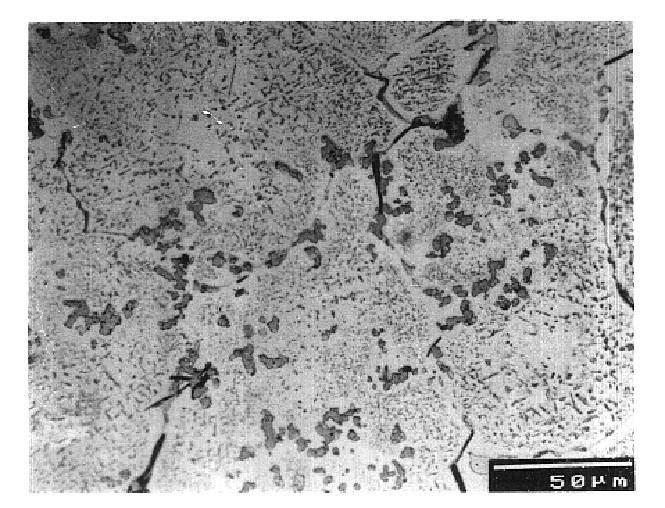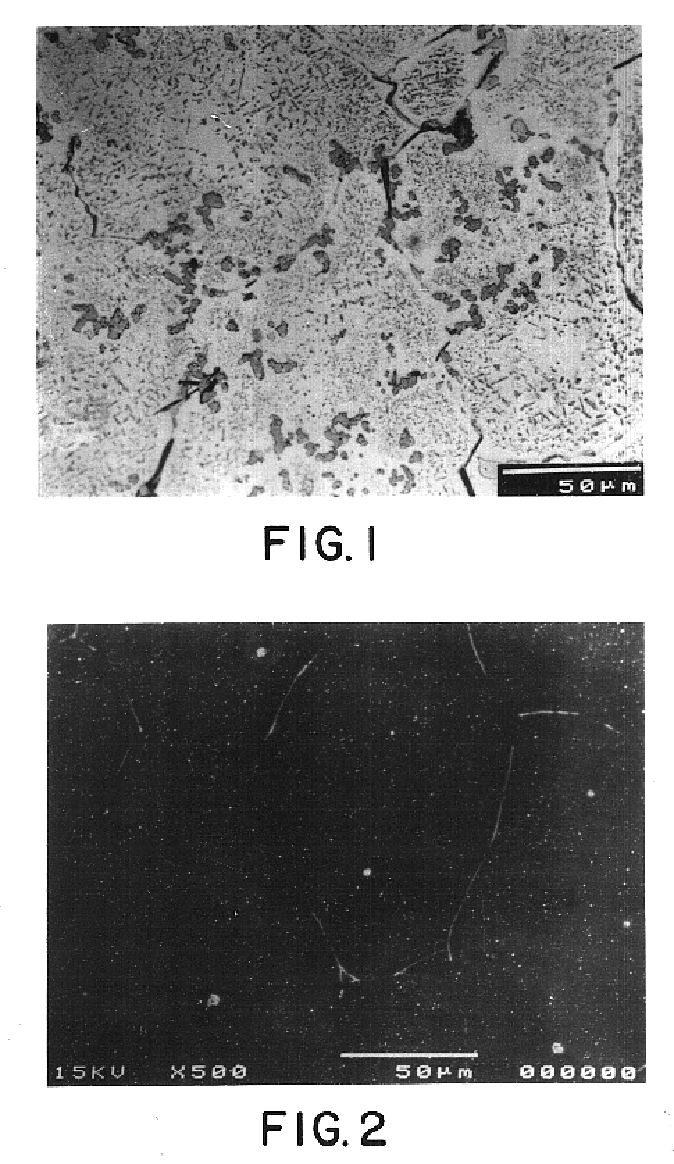Aluminum alloy product refinement and applications of aluminum alloy product refinement
a technology of aluminum alloy and product refinement, which is applied in the field application of aluminum alloy product refinement, can solve the problems of inability to use as a dispersoids for recrystallation control, dispersion strengthening, and inability to form clusters in metal in situ,
- Summary
- Abstract
- Description
- Claims
- Application Information
AI Technical Summary
Benefits of technology
Problems solved by technology
Method used
Image
Examples
example
A first component melt of 1.5 Kg of aluminum-2% titanium (1016 grams Al, 484 grams Ti) provided by the Aluminum Company of America, Alcoa Technical Center, Alcoa Center, PA was prepared and heated to about 983° C. A second component mixture (922 grams total) of carbon particles and a salt (700 grams) containing about 48% NaCl, 48% KCl, 2.2% MgCl2, and 1.8% CaCl2 by weight was prepared and heated to about 200° F. overnight. The preheated first and second components were added together in a crucible and heated to a temperature of about 983° C.
A mechanical stirring was applied by graphite propeller inserted into the crucible. A lid was placed to cover the crucible during reaction and to permit insertion of the graphite propeller and a thermocouple. After vigorous stirring and reaction for 15 minutes, the salt was skimmed, and the melt was cast into 1.5 inch diameter graphite molds. After cooling, the casting was cut for characterization.
The structure of the casting is shown in FIG. 2. ...
PUM
| Property | Measurement | Unit |
|---|---|---|
| particle diameter | aaaaa | aaaaa |
| particle diameter | aaaaa | aaaaa |
| particle size | aaaaa | aaaaa |
Abstract
Description
Claims
Application Information
 Login to View More
Login to View More - R&D
- Intellectual Property
- Life Sciences
- Materials
- Tech Scout
- Unparalleled Data Quality
- Higher Quality Content
- 60% Fewer Hallucinations
Browse by: Latest US Patents, China's latest patents, Technical Efficacy Thesaurus, Application Domain, Technology Topic, Popular Technical Reports.
© 2025 PatSnap. All rights reserved.Legal|Privacy policy|Modern Slavery Act Transparency Statement|Sitemap|About US| Contact US: help@patsnap.com


